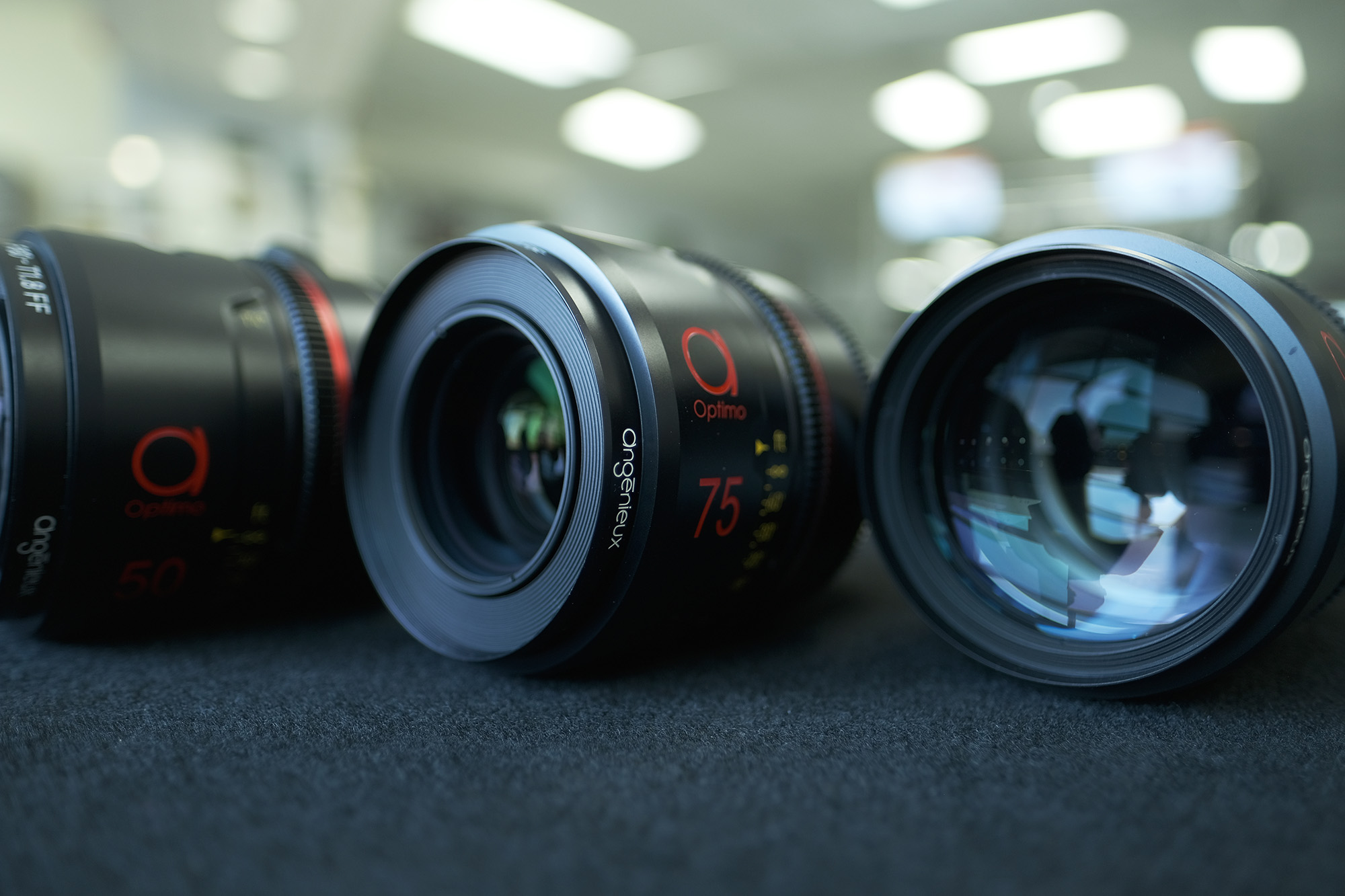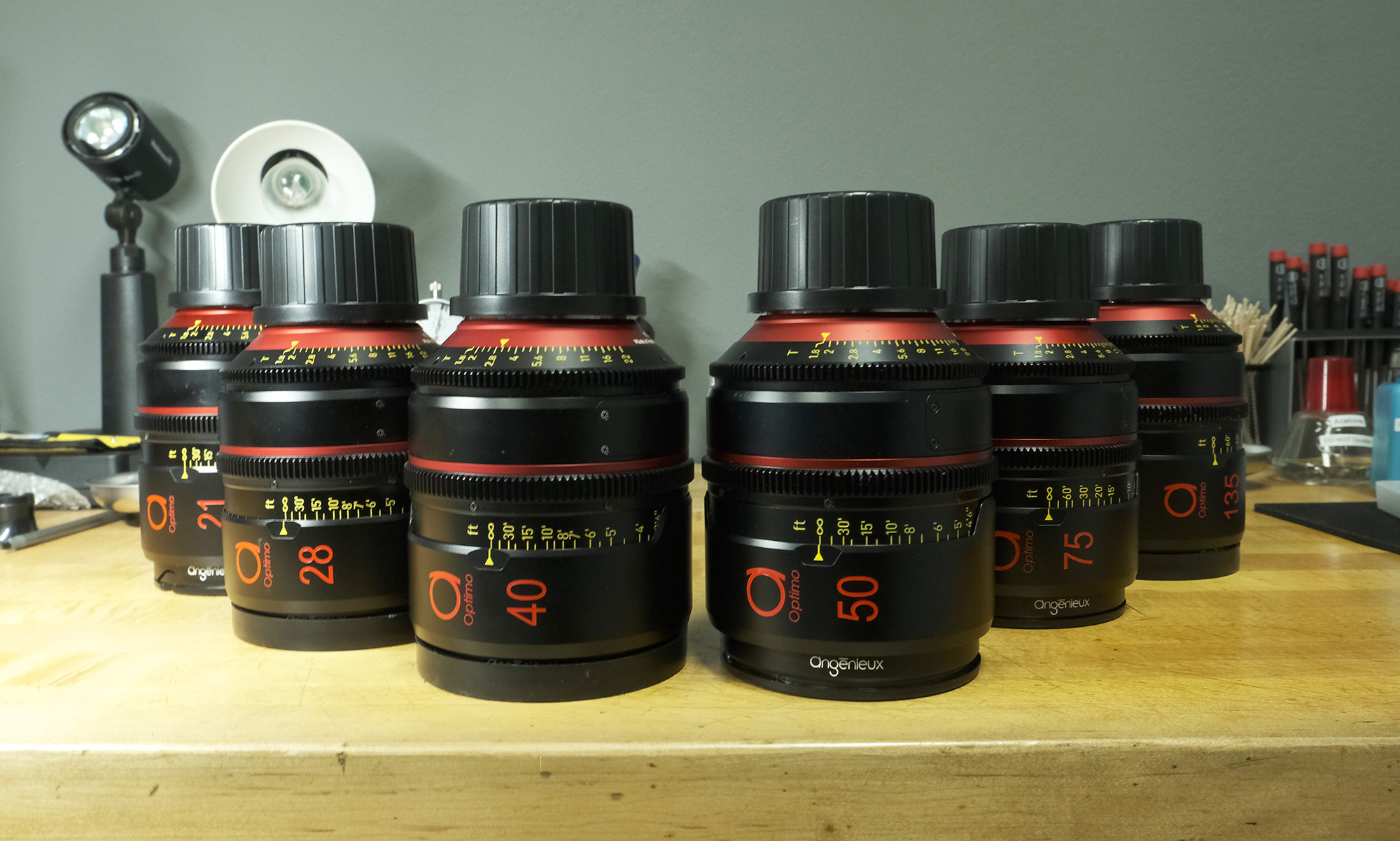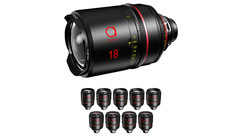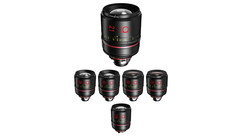Watch Angenieux's intro reel to see the remarkable looks that can be achieved, thanks in part to their new Integrated Optical Palette (or IOP), and then read about the unique design philosophy and specifications of the Optimo Primes.
The Optimo Prime series, available in PL mount, consists of twelve focal lengths: 18mm, 21mm, 24mm, 28mm, 32mm, 40mm, 50mm, 60mm, 75mm, 100mm, 135mm, and 200mm. Most have fast maximum apertures of T1.8, with the widest and longest lenses featuring a T2.0 maximum aperture. All (except the 200mm) have 95mm front outer diameters, use standard 0.8 pitch-geared, non-linear focus and iris rings, and 320° of rotation for focusing. Interestingly, the Optimo Primes actually focus from a bit beyond both the minimum object distance as well as infinity. All feature 46.31mm image circles, covering even the largest of today’s 8K sensors. The Optimo Primes are color-matched to the Optimo Zooms and, when unmodified, show perfectly round out-of-focus highlights across the image plane thanks to their standard nine-bladed iris.

While providing modern mechanics and reliability, Angenieux’s unique approach to customization allows for, essentially, in-lens filtration at the rear, as well as in a central “slot” immediately before the iris. The irises can also be changed from the standard nine-bladed version to others, including a three-bladed design (for triangular “bokeh,” recalling some vintage lenses), or an oval shape for classic elliptical out-of-focus highlights as seen with many anamorphic designs. In addition, front elements are available coated or uncoated.
This unique design approach—internal and rear filter options, uncoated elements, and alternative iris designs—allow for an incredible number of different in-camera effects, as well as the ability to push and pull image aspects, such as contrast, resolution, flare behavior, bokeh character, and effects such as streaking. Angenieux refers to this customization as Integrated Optical Palette (or IOP).
At the rear of each lens are two threaded filter stages, one for when imaging to Super35-format sensors (40.5mm) and the other (46mm) for use with full-frame sensors. These rings can accommodate a special vintage-style filter that can help re-create looks from the golden age of cinema.
The central IOP stage can accommodate a wider range of filter types including streak filters (in colors like blue or orange), a “cracked” filter for elegant aesthetic distortions, and an uncoated element to provoke flares and reduce contrast. A “clear” filter is also available, which can be modified in any number of ways (think hairspray or Vaseline).
Another unique aspect of the Optimo Primes’ customization options is that modifications are relatively quick and easy for a qualified optics tech to perform or return to “stock.” The rear filter stage can be quickly and easily changed in the field, while the central stage, immediately before the iris, and the iris itself, can be modified in about 15 minutes at the bench.

The optics team in our Brooklyn location was able to spend some time, briefly, with several focal lengths of the Optimo Primes in their unmodified state. We found them to have the same impressive build quality of Angenieux’s Optimo Zooms (always very competitive with other high-end lenses in the industry). We especially liked the interchangeable iris and central filter options. In-lens filters have some advantages over tray-based filtration such as weight/bulk, as well as reflection-handling (especially for longer focal lengths). The near-infinite creative options for DPs that these lenses represent also came up over and over again in our conversations.


















AbelCine encourages comments on our blog posts, as long as they are relevant and respectful in tone. To further professional dialog, we strongly encourage the use of real names. We reserve the right to remove any comments that violate our comment policy.
AbelCine publishes this blog as a free educational resource, and anyone may read the discussions posted here. However, if you want to join the conversation, please log in or register on our site.
We use Disqus to manage comments on this blog. If you already have a Disqus account registered under the same email as your AbelCine account, you will automatically be logged in when you sign in to our site. If not, please create a free account with Disqus using the same email as your AbelCine account.